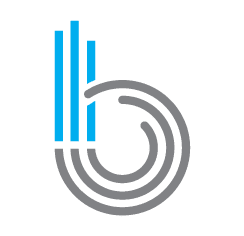“Feedback is the breakfast of champions.” — Brian Halligan, CEO, HubSpot
Every day, business leaders, media outlets, and best-selling authors spout advice on how to run a business and their idea of what it means to be successful. At the core of any business, the secret sauce lies in customer service and developing an effective customer feedback program.
If you don’t know what’s wrong with your products or services, how can you improve them and drive sales? Likewise, if you don’t know what you are doing right, you can’t build a structure based on those wins.
According to HubSpot research, trust in business has eroded. In fact, 55 percent of customers do not trust businesses they buy from as much as they used to, and 65 percent do not trust company press releases or advertisements.
But they do trust their peers, and gathering customer feedback is the key to creating brand loyalty, Cambria Davies, Product Manager at HubSpot, told attendees during her presentation at Inbound 2018 in Boston.

What’s the Benefit of a Customer Feedback Program?
Did you know that the No. 1 most common source of new leads are referrals? Or that it costs 5 to 25 times more money to acquire new customers than to keep existing ones happy?
Loyal customers grow a business much quicker than marketing or sales, and it all begins with gathering customer feedback.
“In order to delight, you have to understand what customers expect of you and the current state of your customer experience,” said Davies. “However, companies are more and more out of touch with how their customers really feel, often because they are not collecting actionable feedback.”
The default for many marketers is to draft a standard satisfaction survey and email it to all customers. However, if you want to receive actionable, invaluable feedback from your customers, then it’s time to develop a sustainable framework for measuring their satisfaction.

Establish Listening Posts
When developing a customer feedback program, it’s crucial not to take a “tunnel-vision approach.” In other words, do not bulk customer dissatisfaction together or assume all customers have the same experience. Many organizations generalize the obvious: they know customers do not want to wait on hold or be transferred to an answering service. But these aren’t specific to that business so they won’t help you create a personalized plan.
Organizations must move past these obvious customer dissatisfactions and take a deeper dive with listening posts. This serves as a way that companies can assess the customer experience at an individual and aggregate level, then identify both pain points and positive feedback.
To start, you must “define your customer journey and what you are looking to learn at key customer milestones,” said Davies. “Then align the right survey methods with your goals and start collecting feedback,” said Davies.
Your organization should collect feedback through a variety of listening posts, including:
- Social Media
- Online Review Sites
- Talking to Front-Line Employees
- Client Testimonials
- Satisfaction Surveys
- Direct Client Communications
Understand Customer Sentiment
After gathering your customer feedback, then what? It’s important to make sure that your customer’s complaints do not fall on deaf ears, said Davies. Determine the common themes and root causes of your customer’s experiences. Then gather corollary data from support requests, sales, and services, and start categorizing common themes and patterns.

Do multiple service requests indicate issues with usability? Have you received a series of complaints regarding pricing or billing? Identifying themes will help you drill down into specific problem areas that need to be addressed.
For example, if several clients love the product but have recurrent issues with the reporting structure, you can determine that the feedback theme is “reporting” and the specific problem area is “functionality.”
Improve the Customer Experience
Once you have determined common themes and problem areas, it’s time to take action to improve the customer experience. First, prioritize changes that matter, said Davies. Analyze the common themes and number of complaints or requests for each problem area.
If you received 50 requests for improved reporting functionality but only five requests for quicker response time, you know reporting is a higher priority. Set up a timeline and arrange which problem areas need to be addressed now, tomorrow, next week, and next quarter.
Next, develop and implement an action plan, then measure and share progress to keep your team on track. Consider forming a committee that meets monthly to make actionable decisions, reinforce the importance of enhancing customer experience, and remove barriers that might prohibit progress.
Finally, arrange for one-on-one follow-ups with the affected customers to let them know their feedback is making a difference. Follow-ups do not have to be a direct phone call; in fact, they can be a personalized email template or a simple handwritten note letting the customer know their voice was heard.
Discover More Insights from Inbound 2018
Want to learn more? Click here to check out some of the best moments of Inbound 2018 and listen to full sessions.


